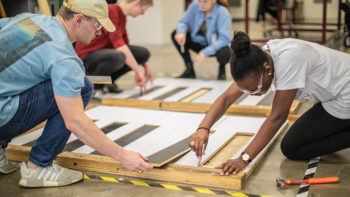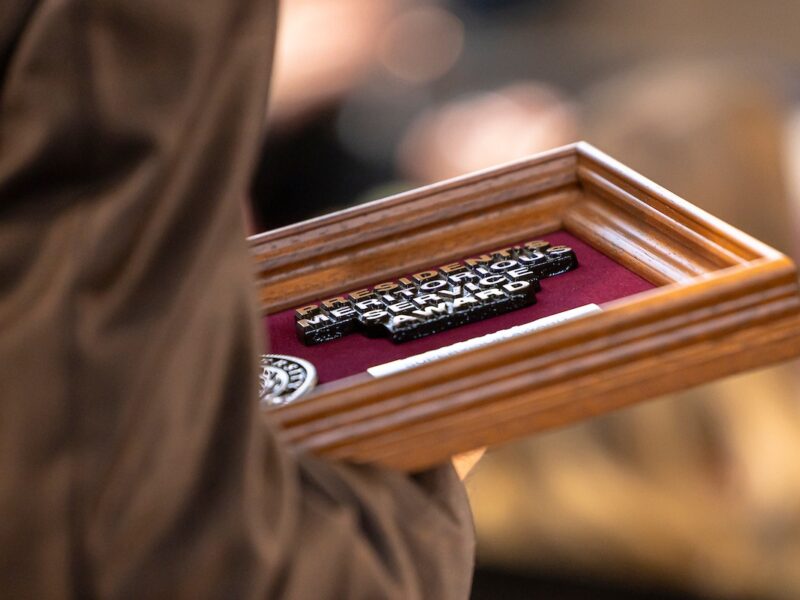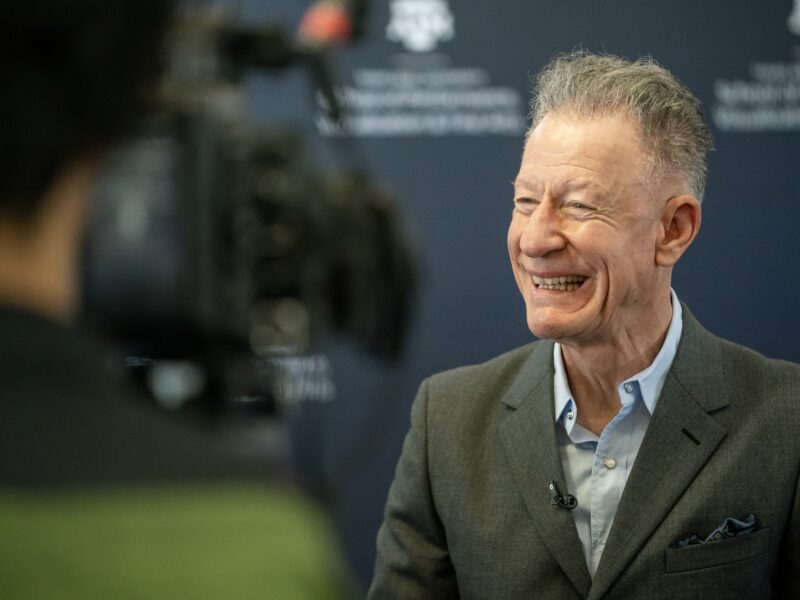Playing On Keys

A team of mechanical engineering seniors is bringing music back to the Children’s Museum of the Brazos Valley by refurbishing a large walk-on piano.
As their capstone senior design project falls into a decrescendo, the team hopes to both inspire an appreciation for music and stimulate a desire to explore engineering through the piano’s distinctive mechanical characteristics.
“The importance of this project is to help out the people of this community,” said senior Madelyn Dudley, who is partially responsible for the fabrication of the design as well as team communication. “As a student at Texas A&M, it is sometimes hard to remember that there is so much more to the community than just the university. This is a small way that the mechanical engineering department can say thank you.”

Several years ago, students from the J. Mike Walker ’66 Department of Mechanical Engineering at Texas A&M University created the piano for the museum, serving as an interactive way to expose children to music. Through pressure sensors, a child can step on a piano key and hear the corresponding note played. But after years of excited children bouncing on the keys, the piano has several parts that no longer function.
The mechanical engineering department used this as an opportunity for a new group of students to develop their skills. Along with Dudley, the team includes Randall Mozingo, Charlie Green, Reagan Tucker, Etoroabasi Nwoko, Joanna Steele and Moyinoluwa Adejumo.
Assigned as a capstone senior design project and funded by an endowment from the department’s namesake, J. Mike Walker, the team of seven students are responsible for reconstructing the piano in a way that provides more durability. Realizing that the pressure sensors would only work for short time periods, it became evident that a new design was needed.
“One of the main issues that we have had to overcome is trying to figure out how the old piano worked,” Dudley said. “We had to spend a lot of time planning how we wanted everything to be laid out.”
The design that hit the right notes was “connecting plates.” A metal plate rests under each key, and another rests on the floor of the tray that the key resides in. When a child steps on a key, the top plate will deflect, the two plates connect and electrical signals cue the music. As an added part of the design, the students hope they will be able to add a unique feature by having the piano keys light up when stepped on.
The most significant design change lies within the way the piano converts energy. Rather than working through pressure, it now uses a switch-like function, which the team believes will be more suitable for the environment the piano is in.
“We are changing the way that the piano actuates energy — how the piano detects someone stepping on a key and turning that into a sound and light response,” Dudley said. “We have redesigned the piano to use a switch-like function, which we are expecting to last much longer. We have also designed a code that enables the piano to hold notes as long as a child stays on the key, which was not the case beforehand.”
The team plans to have the piano fully functioning and back at the museum by the end of March.
For more information about the senior capstone design program or to sponsor a future capstone project, contact Joanna Tsenn at joanna.tsenn@tamu.edu.
This article by Michelle Revels originally appeared on the College of Engineering website.





